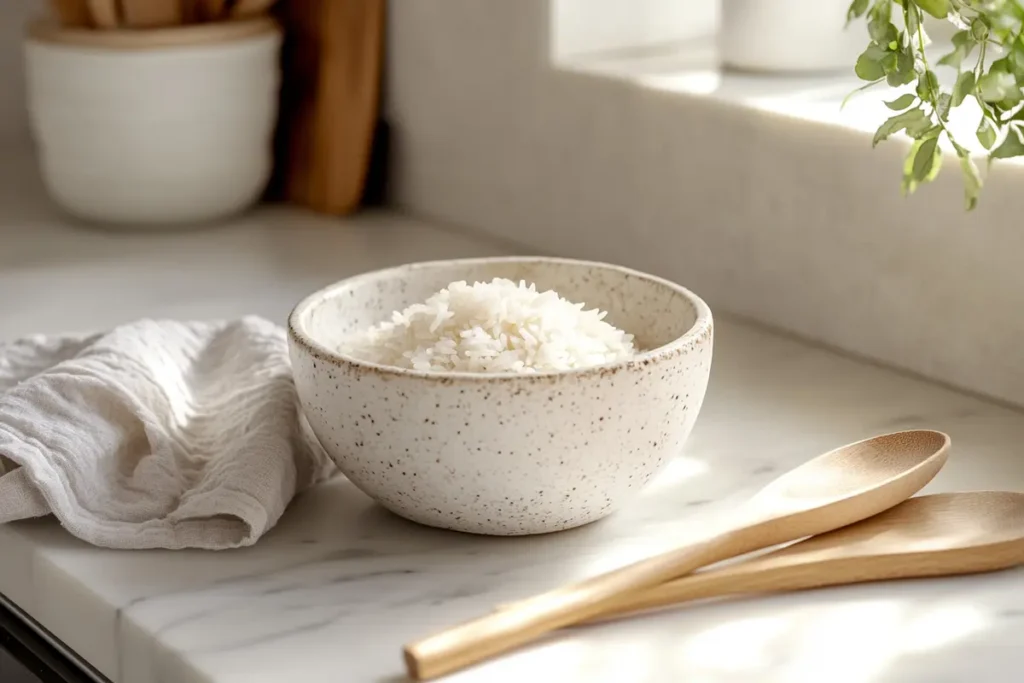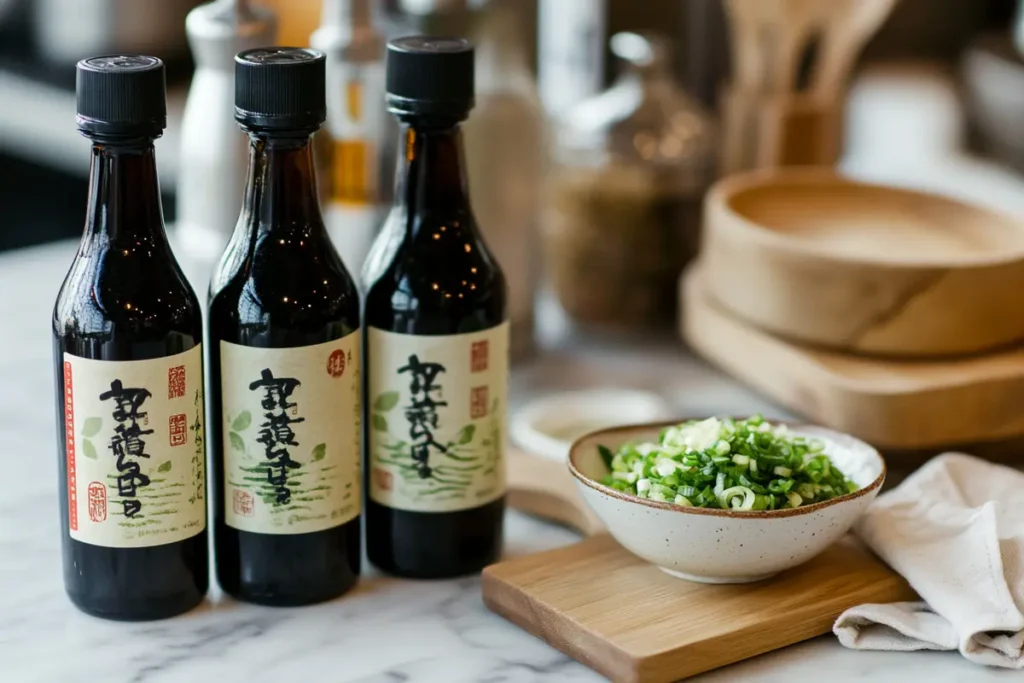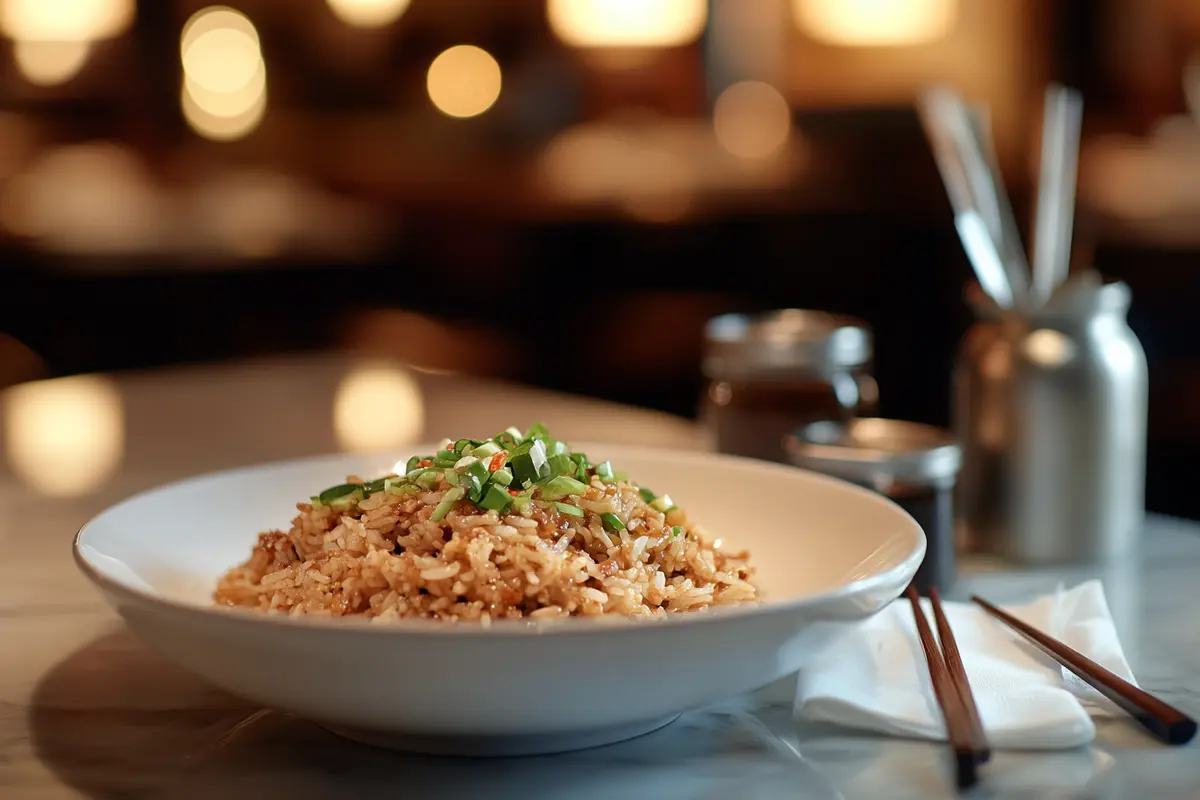What is the secret ingredient in Chinese fried rice? Fried rice is one of the most loved dishes across the globe, offering a blend of bold flavors, vibrant colors, and a satisfying mix of textures. Despite its simplicity, achieving the restaurant-quality taste can feel like solving a culinary puzzle. What makes the dish so irresistible? The secret lies in more than just one ingredient—it’s a combination of essential components, clever techniques, and surprising additions that transform basic rice into a savory masterpiece.
This article dives deep into the foundational elements, essential seasonings, and cooking tips for preparing authentic Chinese fried rice. We’ll even uncover some lesser-known secret ingredients that elevate this dish to iconic status. Let’s get started!
The Foundation of Chinese Fried Rice
A perfect plate of fried rice starts with the right foundation. The texture and taste of your fried rice depend heavily on the type of rice you use and how you prepare it before cooking. Let’s explore these crucial basics.
The Importance of Day-Old Rice

Here’s the first secret: day-old rice is your best friend. Why? Freshly cooked rice is too moist and sticky, which can quickly turn your fried rice into a mushy mess. Refrigerating rice for a day dries it out, separating the grains and giving them that signature firm texture.
If you don’t have leftover rice on hand, spread freshly cooked rice on a baking sheet and let it cool to room temperature before refrigerating it for a few hours. This step mimics the drying process of day-old rice and helps achieve those coveted separate grains.
Selecting the Right Type of Rice
Not all rice is created equal, and that’s especially true when it comes to fried rice. For the best results, opt for long-grain varieties like jasmine or basmati rice. These types are less starchy, which means they won’t clump together when cooked. The light, fluffy texture of long-grain rice makes it ideal for absorbing all the rich flavors of your seasonings and sauces.
Short-grain or sticky rice, often used in sushi, is best avoided for fried rice as it’s more likely to form clumps. If you’re a fan of that classic restaurant-style fried rice, jasmine rice is the way to go—it’s fragrant, firm, and easy to work with.
Essential Seasonings and Sauces : Chinese rice secrets

Seasonings and sauces are at the heart of any great fried rice recipe. These flavorful additions don’t just enhance the taste—they help answer the question, “What is the secret ingredient in Chinese fried rice?” Let’s break down the must-haves and how to use them effectively.
Soy Sauce: The Classic Flavor Enhancer
When it comes to fried rice, soy sauce is non-negotiable. It’s the backbone of the dish, giving it that rich, salty, umami punch. Soy sauce also adds the signature golden-brown color we all associate with fried rice.
But there’s a trick to using soy sauce correctly. Instead of dousing the rice in it, use a light drizzle and stir-fry quickly over high heat. This ensures even coating and avoids overpowering the dish. For added depth, try combining light and dark soy sauce—a technique often used by chefs.
Oyster Sauce: Adding Depth and Umami
If you’re wondering what makes restaurant fried rice taste better than homemade versions, oyster sauce might be the answer. This thick, savory sauce adds layers of flavor without making the rice too salty. Its natural sweetness balances the soy sauce, creating a perfectly harmonious dish.
A small spoonful is enough to make a big difference. Mix it into the rice during stir-frying to evenly distribute the umami goodness.
Sesame Oil: The Finishing Touch
Sesame oil may not take center stage, but it’s a game-changer. Just a few drops added at the end of cooking will infuse the dish with a nutty aroma and earthy flavor. It’s crucial to add sesame oil after cooking rather than during, as high heat can destroy its delicate taste.
Want an extra tip? Pair sesame oil with chopped green onions for a final flourish of flavor and freshness.
The Role of Proteins and Vegetables in Chinese fried rice recipe
Chinese fried rice isn’t just about rice—it’s the colorful combination of proteins and veggies that make each bite exciting. These ingredients contribute to both the dish’s texture and its visual appeal.
Incorporating Proteins: Eggs, Meat, and Seafood
Scrambled eggs are an iconic part of fried rice. They’re simple to prepare and provide a soft, creamy texture that contrasts perfectly with the firm grains. To make them just right, scramble the eggs separately and fold them into the rice at the end.
If you’re looking for something heartier, diced chicken, pork, or shrimp are excellent options. Each protein adds its own distinct flavor and texture. Shrimp, in particular, pairs beautifully with the soy and oyster sauce combination, enhancing the dish’s overall umami profile.
Vegetable Additions for Color and Crunch
Vegetables are more than just filler—they’re what bring brightness and crunch to the dish. Carrots, peas, scallions, and bell peppers are some of the most popular choices. These veggies not only provide color but also balance the savory richness of the rice with their natural sweetness.
For best results, chop the vegetables into small, uniform pieces. This ensures even cooking and allows them to blend seamlessly with the rice. Stir-fry the veggies briefly before adding the rice to retain their crunch and vibrant color.
Cooking Techniques for Perfect Chinese fried rice recipe
Mastering the art of cooking is essential to uncover what is the secret ingredient in Chinese fried rice. Beyond ingredients, the method plays a pivotal role in achieving that authentic taste and texture. Let’s delve into the techniques that make this dish exceptional.
The Importance of High Heat and the Right Oil
Cooking fried rice demands high heat. This intense temperature ensures that each grain is seared quickly, locking in flavors and preventing sogginess. A well-seasoned wok is ideal, but a large skillet can suffice if heated properly.
Choosing the right oil is equally crucial. Opt for oils with high smoke points, such as vegetable or canola oil, which can withstand the required heat without burning. These oils have neutral flavors, allowing the seasonings to shine. Adding a splash of sesame oil at the end imparts a distinctive aroma without the risk of it burning during cooking.
Stir-Frying: Achieving the Ideal Texture
The hallmark of excellent fried rice is its distinct, non-clumpy grains. To achieve this, employ the stir-fry technique. Continuously toss the rice and ingredients over high heat. This constant movement ensures even cooking and prevents sticking.
Begin by sautéing aromatics like garlic and onions until fragrant. Introduce proteins and vegetables, cooking them to the desired doneness. Finally, add the rice, breaking up any clumps, and combine it with the other ingredients. Stir-fry swiftly, ensuring each grain is coated with the seasonings. This method results in a harmonious blend of flavors and textures.
Unveiling the Secret Ingredients of Chinese fried rice recipe
While traditional seasonings lay the foundation, certain additions can elevate your fried rice, answering the question, what is the secret ingredient in Chinese fried rice. Let’s explore these enhancements.
Chinese Five Spice: A Flavorful Addition – Chinese rice secrets
Chinese Five Spice is a blend of star anise, cloves, Chinese cinnamon, Sichuan peppercorns, and fennel seeds. This aromatic mix introduces a balance of sweet, bitter, sour, salty, and umami flavors, adding depth to your fried rice. Use it sparingly—a pinch can transform the dish, providing a subtle warmth and complexity that intrigues the palate.
Mirin: The Unexpected Sweetness
Mirin, a sweet Japanese rice wine, might seem unconventional in Chinese cuisine, but it offers a delicate sweetness that complements the savory elements of fried rice. A small splash balances the saltiness of soy sauce and the richness of oyster sauce, creating a harmonious flavor profile. Its subtle acidity also enhances the overall taste, making each bite delightful.
Common Mistakes to Avoid in Chinese fried rice recipe
Even seasoned cooks can stumble upon a few missteps when making fried rice. To truly uncover what is the secret ingredient in Chinese fried rice and replicate its authentic taste, steering clear of these common mistakes is essential.
Overloading the Pan
One of the biggest culprits behind soggy fried rice is overcrowding the pan. When too many ingredients are added at once, the pan’s temperature drops significantly. Instead of frying, the ingredients end up steaming, which can lead to mushy rice.
To avoid this, cook in small batches. Start by stir-frying proteins and vegetables separately, then combine them with the rice at the end. This ensures that everything cooks evenly and maintains the desired texture.
Using Freshly Cooked Rice
Using freshly cooked rice is another frequent mistake. Fresh rice is still moist and sticky, making it prone to clumping. As mentioned earlier, day-old rice is ideal because it’s drier and more resilient to high heat.
If you’re in a pinch, spread freshly cooked rice on a baking sheet and refrigerate it for at least an hour to reduce its moisture content. This quick trick helps achieve that perfect, non-clumpy texture.
Frequently Asked Questions (FAQs)
When it comes to fried rice, people often have burning questions about achieving the perfect dish. Let’s address some of the most common ones, including what is the secret ingredient in Chinese fried rice.
What Type of Rice is Best for Fried Rice?
Long-grain rice, such as jasmine or basmati, is the best choice for fried rice. These types of rice are less starchy, so they don’t clump together. Their light and fluffy texture absorbs flavors beautifully while keeping the grains distinct.
Why Does My Fried Rice Turn Out Mushy?
Mushy fried rice often results from using freshly cooked rice or overcrowding the pan. As discussed earlier, day-old rice is essential to achieving a firm texture. Also, cook in small batches to ensure the pan stays hot enough to fry the rice rather than steam it.
Can I Skip the Soy Sauce?
Soy sauce plays a vital role in flavoring fried rice, but if you’re looking for alternatives, tamari or coconut aminos can work. However, the dish may lack its signature color and depth of flavor without it
By keeping these tips in mind, you can avoid common pitfalls and confidently create a fried rice dish that rivals your favorite takeout. Ready to try it for yourself? Happy cooking!

